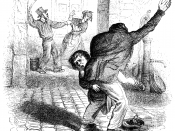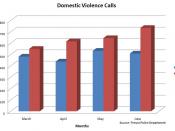Non-fatal offences against the person include assault, battery, actual bodily harm (ABH) and grievous bodily harm (GBH) in its two forms. However, there is no clear statutory definition for either assault or for battery, while definitions of the more serious offences are contained in an Act passed back in 1861, with much of the vocabulary old-fashioned and even misleading. This shows that there is a gap in the law. Law Commission has also seen this as a problem within the law and has produced a draft of a Criminal Law Bill to reform this area and create an offence that would cover this area.
Apart from there not being a clear definition, the hierarchy of the offences can also be criticised. The maximum sentence for assault and battery is 6 months imprisonment and s.47 can be 5 years imprisonment. The only real difference between them is that actual bodily harm is caused- yet ABH can mean as little as causing discomfort to the person.
Also the s.20 offence is defined as a much more serious offence than s.47 however, they share the maximum sentence of 5 years imprisonment. Another problem with the sentencing on non-fatal offences against the person is that the only difference between s.20 and s.18 is arguably a slightly more serious mens rea and yet the maximum sentence leaps from five years to life imprisonment. However, s.18 has the mens rea of murder and only chance decides if the person survives and stopping the defendant being charged with murder.
There are also problems with the law of non-fatal offences against the person within domestic violence. This can be a problem because police approach to domestic violence is to avoid involvement. It may also be a problem getting wives or girlfriends to give evidence against their...



Soonam
a good one essay
1 out of 1 people found this comment useful.